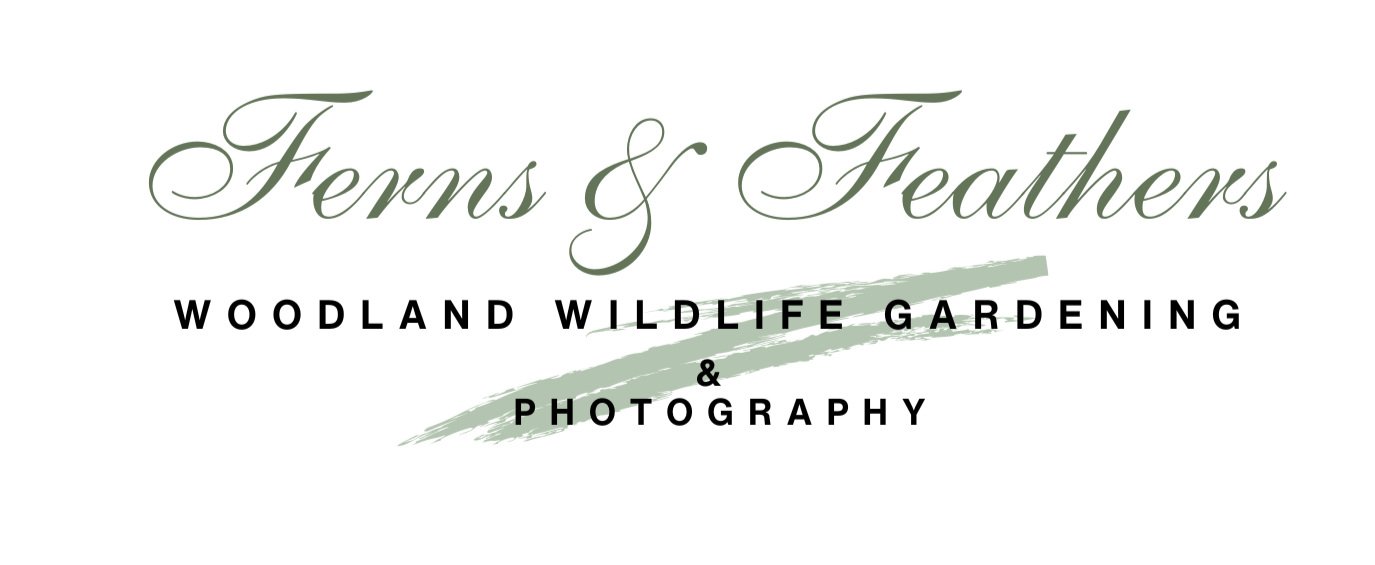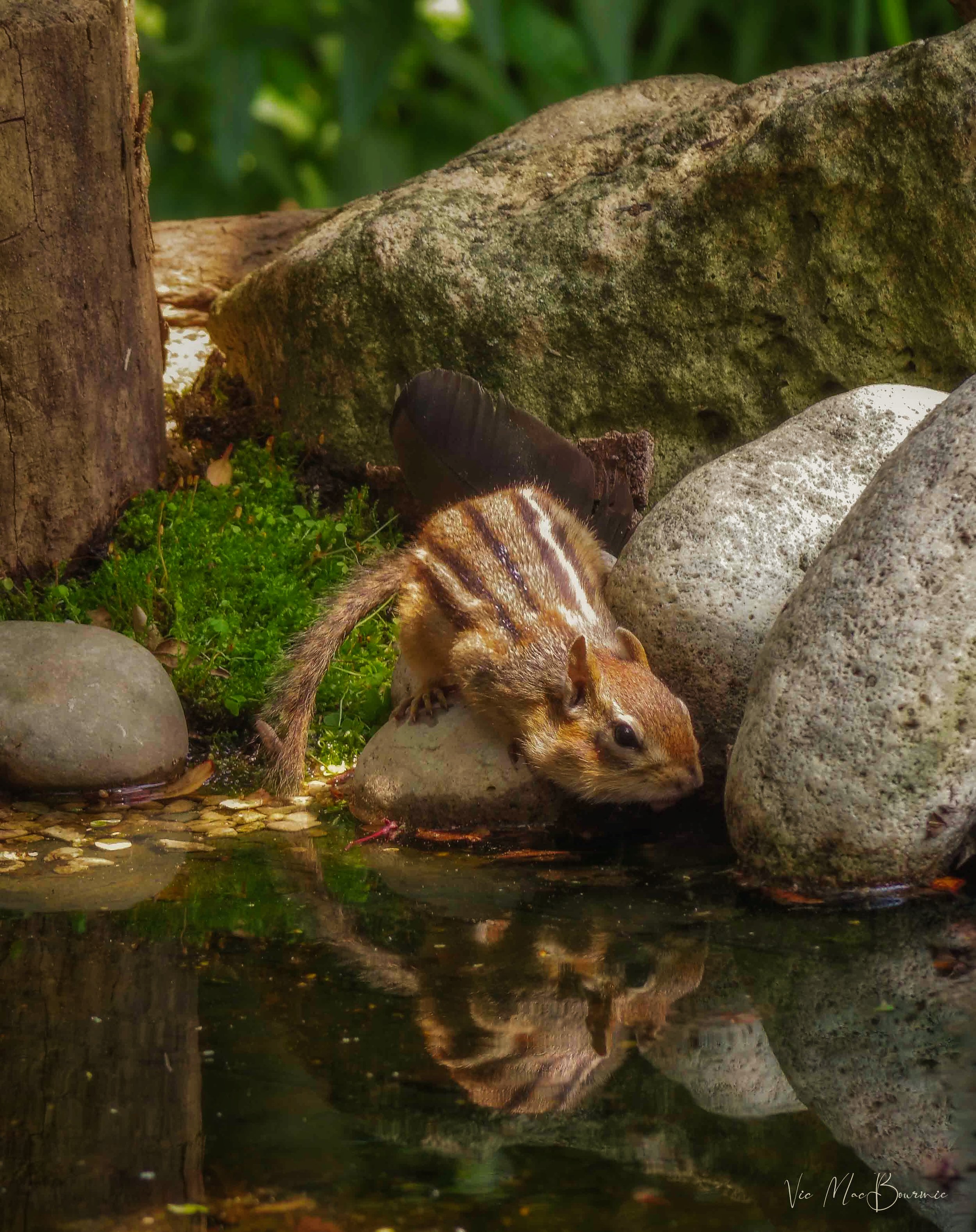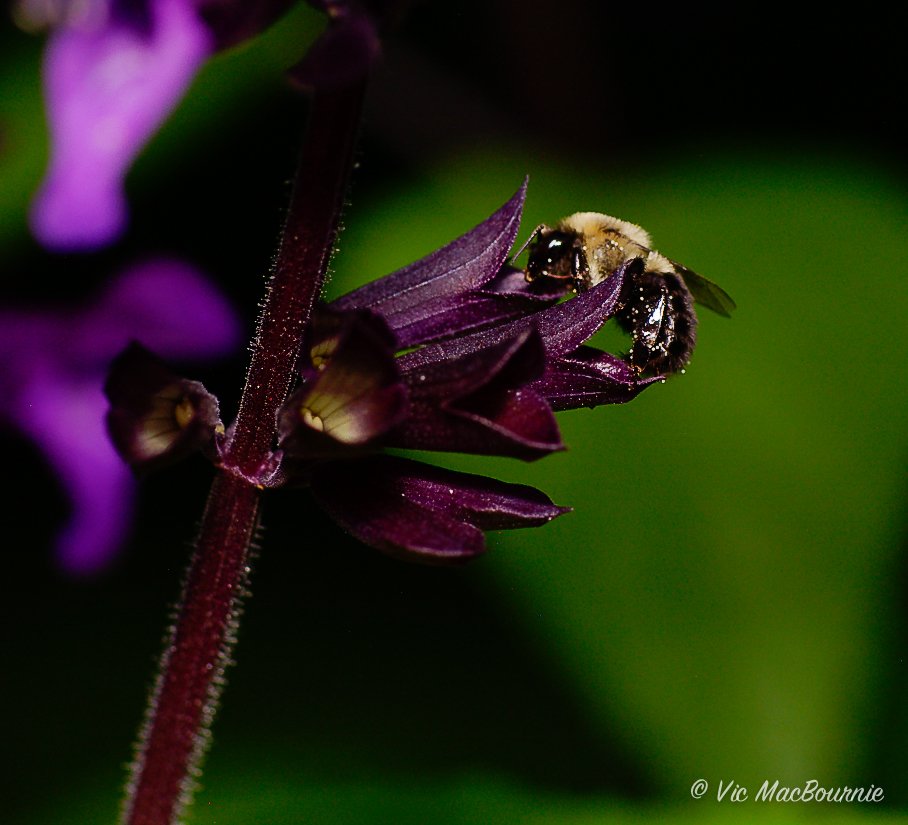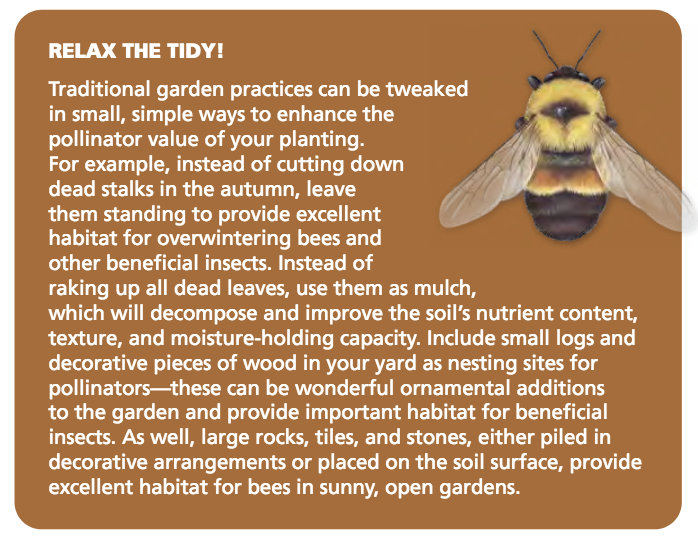If you build it, they will come
Creating a woodland/wildlife garden using native plants has many benefits including being able to photograph the wildlife that lives in and visits your backyard.
“A garden without wildlife is just a stage set. ”
An afternoon of photography in the woodland/wildlife garden
“If you build it they wll come,” certainly rings true in our little woodland garden.
On any given day there are a host of visitors to the garden ranging from a mama deer and her fawns, to a beautiful fox wandering through looking for prey. While these woodland creatures are not always regular visitors to the backyard, they, along with a host of birds from owls to woodland warblers and wild turkeys provide the memorable moments and exciting photographic opportunities that are not always possible during, for example, a Walk in the Woods.
While the potential for these wildlife encounters and photo opportunities add an air of anticipation and excitement whenever I’m out it the garden, it’s our regulars that keep us entertained and provide a wealth of photographic opportunities on any given day.
There are many good reasons to build a woodland/wildlife garden that does not involve capturing images, but for me photography was one of the key driving factors behind the decision to create our garden.
The added benefit of providing subjects to photograph will be just a bonus for some, or a raison d’etre for others who seek out a creative outlet for their photographic pursuits.
This article looks at a number of images made over about a five-hour period under less than favourable photographic lighting from about 10am to 3 pm in hot, sunny conditions.
“Expensive photographic expeditions to far off and exotic places are not necessary to capture great images. Time, patience and some ingenious natural outdoor photographic setups can help you make great images every day, or maybe just on weekends.”
Native plants are key to success
By focusing on using as many native plants as possible, I knew the opportunities to bring in an ever increasing number and variety of wildlife would increase exponentially. So, I guess you could say that adding native plants was as much for my benefit as it was for the wildlife and biodiversity of the garden.
Nevertheless, it’s working for both the native wildlife and for our enjoyment of the garden, its inhabitants and regular visitors.
Although I love the images below of the wild turkeys wandering through the alliums, the fact alliums are non native screams a garden image or, much worse, an Ai-produced image. In this case, the alliums are a new addition to the garden for aesthetic reasons entirely and, as you will see, they offer some interesting photographic opportunities. The second image of the turkey in our massive fern garden is much more natural.
Gardens, especially native, woodland gardens, have a way of bringing both life to the world around us and joy in our hearts.
This image of a chipmunk made at the backyard reflection post shows the top of images available when you add a small, simple reflection pond to your woodland/wildlife garden.
Key elements to help ensure success
To help ensure a greater photographic success rate, I have added a few key elements to attract more wildlife to specific areas of the garden. Obviously a bird feeding station is at the heart of it, but a small outdoor reflection pond adds the possibility of capturing interesting images on a regular basis. (See chipmunk image).
More recently, I have begun to add natural woodland planters throughout the front and back gardens. The planters are based around fallen logs that provide a central area for native woodland plants, mosses and ferns. The planters will provide natural homes for a myriad of wildlife from snakes to salamanders and toads as well as a host of insects and mammals.
It was here, with the bird feeding station in front of me and the reflection pond to my left, that I chose to set up my Tragopan Photo blind for some bird-feeder and outdoor-studio action on a recent afternoon after spending some time making images of our alliums and other garden flowers with a Lensbaby Composer lens and macro filters.
The following are a selection of images from that afternoon of photography with three cameras – A Pentax K5 equipped with the Pentax 300mm F4.5* lens and 1.4 af Tamron converter for bird closups, the diminutive Pentax Q and 06, f2.8 lens (equivalent to about 80-200mm) and the Olympus OMD-E10 equipped with the Lensbaby Composer and closeup lenses.
The images were post processed using Lightroom and Luminar Neo.
The day of photography began with making images of the spring flowers with the Lensbaby Composer on the Olympus EM10 in the back garden. The following is a sampling of images made with the Lensbaby. (For more images, be sure to check out my Photo gallery from the photo shoot.) For those not familiar with the lens, it is a lens system used to capture creative, dreamy, soft-focus images. Although the lenses are capable of capturing sharp images, they really come into their own when used more creatively to make soft, delicate, ethereal images where sharpness is not the focus.
The late morning/afternoon backyard photo safari began with an hour of flower photography transitioning into an afternoon of bird and wildlife photography.
Below are a sampling of images from the second part of the photo session where I spent the afternoon in the photo blind listening to music on the iPod (yes I still use one) and making images of birds at the feeder and wildlife at the reflection pond/outdoor studio. (For more images, be sure to check out the accompanying photo gallery that provides more information on lenses, f-stops etc.)
In the time spent in the photographic blind, I was visited by the female cardinal, blue jay and a host of woodpeckers at the bird-feeding station, while a combination of feisty red squirrels and chipmunks visited the reflection pond. A blue jay came to the reflection pond for a brief moment before flying back to the feeding station.
Only the chipmunk came down for a drink at the pond, allowing me to make a few images where the chipmunk’s reflection was captured. (See image higher up in this post)
Capturing the beauty of the woodland/wildlife garden
If you are lucky enough to have either already created a woodland/wildlife garden, or are considering your options on the style of garden you want to create in your yard, consider adding elements that will enable you to make memorable wildlife images in the comfort of your backyard.
Expensive photographic expeditions to far off and exotic places are not necessary to capture great images. Time, patience and some ingenious natural outdoor photographic setups can help you make great images every day, or maybe just on weekends.
In this post I touched on flowers, birds, and a couple of regular backyard squirrels and chipmunks, but butterflies, hummingbirds, various insects and a myriad of native flowers are just a sampling of subjects that create the perfect backdrop to capture some stunning images on your own backyard safari.
Why worry about native bees?
It’s time to worry about our native bees’ future and how we can help them in our gardens.
Because too many of us are worried about the wrong ones
Author Paige Embry explores the importance of Our Native Bees in her informative book. top left, a “bee home” created by a local craftsman who takes great care to create houses that can be used year after year. Links to both the Bee houses and the book in the text below.
When it comes to bees most of us are worried about the wrong ones.
Honey bees are not native, they aren’t very effective pollinators and they may very well be killing our lovely little native bees.
If that’s not reason enough to be concerned, what makes it even worse is that Big Ag is generally more worried about honey bees. Afterall, Big Agriculture has become dependent on honey bees to pollinate their acres and acres of monoculture farms and orchards and they’re not going to let a couple of native bees get in their way of making money.
That’s where we gardeners can make a difference. By growing native plants, leaving our gardens a little messy, refraining from all pesticides and leaving our leaves on the ground rather than cleaning them up in fall or early spring, we can provide these lovely little work horses with everything they need to prosper in our yards.
They don’t ask for much.
Our native bees are mostly solitary. They don’t need a lavish wooden hive. A simple hole in the ground that they excavate all on their own or use an existing one left behind by another garden inhabitant, is usually all it takes. Oh, and did I mention that native bees are very docile, rarely sting (in fact most don’t even have stingers) and are completely non-aggressive.
High quality bee homes like the ones above from Best Nest (click on picture to purchase) include interchangeable bee cavities that can be removed and cleaned after use.
In their book A Garden For The Rusty-Patched Bumblebee, Creating Habitat for Native Pollinators, authors Lorraine Johnson and Sheila Colla lay out their thoughtful approach to protecting our native bees.
But first, they focus on where we should be placing our angst and it’s not really with the decline of honey bee hives.
“There’s lots in the news about the loss of honeybees, Colony Collapse Disorder, Varroa mites and their dire consequences for the food we eat. Industrial agriculture – the system of large, mechanized monoculture farms – depends on the pollination services of non-native and managed honeybees, trucked long distances across the continent to pollinate crops…
“We need to find out why honeybees are dying … but it’s important to note that honeybees are not an endangered species at risk of extinction. They are among the most common species in the world introduced to many countries outside of their natural ranges.”
In fact, when a colony dies, a new one can be started simply by purchasing a readily available new queen.
The authors go on to say that this does not diminish the “seriousness of the honeybee deaths”, but point out that the “focus on managed honeybee hive losses has eclipsed the fact that many native bees, such as the rusty-patched bumblebee, the American bumblebee and others, are in serious trouble. And when native bees disappear, they disappear forever.”
For more information on helping our native bees, take a moment to check out my other posts listed below:
• Our Native Bees – Creating a lawn for native bees
A native Bumblebee works a salvia in our garden. Honey bees are extremely rare in our yard. Probably 90-90 per cent of the bees in our yard are native. A positive sign and proof that the steps we are taking to provide habitat is helping our native bees.
5 take aways about Native Bees
1) There are at least 4,000 species of native bees in North America in every shape, size and colour you can imagine.
2) Sweat bees – beautiful green iridescent native bees – get their name because some like to lick up sweat
3) Most native bees are small, live alone and do not sting either because they have no stingers or are so docile that it would take a life and death situation to get them to sting.
4) Native bees vary in size from the mighty carpenter bee (about an inch in length) to the tiny Holeopasites calliopsidis that isn’t much bigger than Roosevelt’s nose on a dime. And it’s not even the smallest native bee in the United States. That honour goes to Perdita Minima.
5) There are 20,000 species of bees worldwide that are responsible for the seeds of rebirth of three-quarters of the flowering plants in the world.
A Garden For The Rusty-Patched Bumblebee, Creating Habitat for Native Pollinators is an excellent addition to any gardener’s library.
Paige Embry, author of the Our Native Bees book is a true solitary bee aficionado. “It annoys her — rightly — that most people know next to nothing about the 4,000 species of native bees nesting in the ground, in trees and in the sides of our houses,” points out the New York Times, in a review of her book.
Embry points out that in 2015 the U.S. federal government “issued a plan to restore 7 million acres of land for pollinators and more than double the research budget for them.”
Big problem, however. In doing so they forgot about one important ingredient.
That forgotten ingredient was evident in the name of the new program: the “National Strategy to Promote the Health of Honey Bees and Other Pollinators.”
As Embry aptly points out: “Four thousand species of native bees, not to mention certain birds, bats, flies, wasps, beetles, moths, and butterflies, reduced to ‘other pollinators.’ ”
It’s the sad tale of our native bees. But with the efforts of Embry, bee researchers and entrepreneurial dreamers who are working hard to help native bees get the respect and recognition they deserve, there is certainly some reason to be optimistic for the 4,000 species of native bee that call North America home.
This graphic from Embry’s book Our Native Bees shows the attention to detail and helpful advice that the book offers. Another must for the native-bee-loving gardener.
Embry’s 195-page gem of a book is actually written in two halves: The first half focuses on the commercial importance of native bees in the agricultural world and tells the story behind California’s massive almond industry among others; the second half explores the importance of the native bees in nature and efforts made to save them including an unlikely pairing between the future of native bees and intensive work being done at a U.S. golf course to create ideal habitat for them and other pollinators.
Time to rethink lawns
Embry wastes little time advocating for a change in the way homeowners see their carpets of monoculture they call grass. She uses an example that is both shocking and encouraging.
She turns her focus to golf courses and goes into great detail about two programs at American golf courses that encourage setting aside natural areas on the golf course for native pollinators.
The first program stems from a 2002 report from the Xerces Society for Invertebrate Conservation who teamed up with the U.S. Golf Association to write a report called “Making room for Native Pollinators: How to create Habitat for Pollinator Insects on Golf Courses.”
The second program, and one she turns her attention to, is a program out of Europe, Operation Pollinator, started by Syngenta, one of the world’s largest agrochemical comanies (another name for a pesticide company).
The program started in the United Kingdom in the early 2000s after a survey of golfers revealed that what they liked most about going out for a round of golf was the nature they sometimes stumbled across in the more natural areas of the course. That, together with the desire to reduce the costs of operating a course, lead to the unexpected marriage between nature and a massive pesticide company.
By creating a natural area for pollinators, the pesticide company was able to use their expert biologists to turn perfect turf into pollinator-friendly areas. The plan cut down on the cost of pesticide while at the same time providing more nature for the golfers.
From the simple addition of clover into the lawn Embry moves on to the “making of a bee lawn.”
The transformation from golf-course turf to the perfect bee lawn has been the focus of many studies and creations that has met with varied success over the years.
As one researcher at the University of Minnesota explains: “the hardest part of getting a bee lawn into use isn’t developing the seed mix; it’s dealing with people’s vision of what a lawn should be…"
“If we didn’t have to worry about our neighbours, I think there would be a much more diverse look.”
Embry goes on to explain as a possible solution: “If the idea of flowers growing in the grassy lawn just isn’t quite achievable yet, there’s always the golf course route. Take out some of that lawn and convert it into a home and dining hall for bees. It’s all a matter of rethinking normal.”
A time for action
Now is the perfect time to remove more grass and add native plants to your garden. For a complete list of native plants (to Ontario and parts of North eastern United States) check out A Garden for the Rusty-Patched Bumblebee. In it, the authors provide more than 170 pages of information on what and how native bees and other pollinators benefit from and help specific native plants.
Amazon link for A Garden for the Rusty-Patched Bumblebee
Amazon Link for Our Native Bees
Building your garden one native plant at a time
Adding a few native plants to your garden every year will go a long way to building the landscape of your dreams.
Be part of the solution: Plant a few native plants each year
If 1 million of us each planted just ONE native flower this spring, we would feed half a BILLION pollinators across hundreds of species—bees, butterflies, hummingbirds, and more.
Building a garden does not happen overnight. In fact, some of the best gardens take a lifetime of planning, planting, changing and repositioning.
And, for most of us, that’s the true joy of gardening. Like a living room interior, it works better if it evolves over time. Not only do the conditions in our gardens change as tree canopies grow larger and shade out the areas below, but new opportunities arise when once shady locations are opened up to the sun’s rays after a storm, for example, takes down a tree.
One of the great joys in the garden occurs each spring when we anxiously await the emergence of last season’s new plantings.
Native plants are not only beautiful, they contribute to our gardens in so many ways, from creating diversity in plant life, to bringing in a greater variety of fauna from birds to butterflies.
Last year, a number of new plants as well as existing plants were added to various areas of our garden, and I am so looking forward to their emergence and presence this season after they’ve had an opportunity to get established and put on a full year of growth.
Purple coneflowers, wild columbine, wild geranium and wild ginger are just a few of the native plants we added to the woodland garden last year either as new plants, or by dividing some of the plants already in the garden.
There are probably others that I can’t even remember – just one of the benefits of getting old.
It will be interesting to see how the new plants survived our difficult winter. The high snow provided the needed protection for the newly planted roots, but those same conditions forced our rabbits, deer and smaller critters to nibble on many plants that they have traditionally not touched over a more normal winter. And “nibble” is more of a kind way of saying “attacked.”
I am hoping our wild ginger that I planted last year will begin to get more established this season.
The result, plants that have been set back somewhat and clipped off just as they were beginning to show signs of good growth. I’m hoping the natural pruning will force more growth and result in more bushy plants this year, but that might be a little optimistic.
In any case, much of the spring expectations centres around the new plants and how they will change our landscape this season.
Plan now to add new natives this spring
I can’t imagine a spring without this expectation of great things to come. And, that’s why it’s important to begin planning now to add new native plants to the garden this spring and summer so that next year you will be able to experience that same anticipation.
In our garden, I’m planning to add a few favourites to various areas of the garden.
A Native gardening gem
A Garden For The Rusty-Patched Bumbbee is a must-have book for any native gardener looking for detailed information on individual native plants.
My first stop is an outstanding garden book and plant encyclopedia of native plants written by native plant experts Lorraine Johnson and Sheila Colla with excellent illustrations from Ann Sanderson. Although “A Garden For The Rusty-Patched Bumblebee, Creating habitat for Native Pollinators” is focused on Ontario and the Great Lakes, it is a wealth of information for any gardener looking for information on native plants in this general area, whether in Ontario or in the surrounding areas including the eastern United States Great Lakes area. If you want more information on this outstanding native plant book, read my full review here.
Wild Columbine
Wild Columbine should make a strong appearance in our garden after adding additional plants last year.
Just be sure to try and purchase your plants or seeds from a reputable seller as close to where you garden as possible. This helps to ensure you get hardy plants that are proven for your specific region.
I try to purchase most of my native plants from Ontario Native Plants. (link to my earlier post on this mail order company)
So what are my planned new native plants for this season?
Here are three that I hope to add to our woodland garden.
Meadow Sundrops. Image courtesy of Wikipedia.
Meadow Sundrops (Oenothera pilosella): These yellow-flowered Carolinian-zone plants, not unlike evening primrose, are easy-to-grow yet versatile plants that according to the authors of A Garden ForThe Rusty-Patched Bumblebee, needs to be grown in more gardens. They provide the following description: The clusters of large (in relation to the overall size of the plant) fragrant flowers are a lemon yellow that glows, and the flowers have lines that serve as nectar guides. Bees, flies, butterflies and skippers all visit the blooms, which provide nectar and pollen.”
That sounds perfect to me. But that’s not all, authors Johnson and Colla report in the book that the foliage is often reddish, and the plants tolerate both dry soil and moist conditions. They do well in rain gardens and readily spread creating colonies.
The plants reach a height of 45-60 cm (17-23 inches) and the yellow flowers bloom late spring to early summer. They prefer lots of sun and will attract pollen specialist native bees, are larval hosts for primrose, pearly wood-nymph, grape leaffolder, white-lined sphinx, Nessus sphinx, gallium sphinx, red-streaked mompha and others. For more information, check out the Wikipedia page here.
Ontario Native Plants website showing the beautiful Spotted Beebalm (monarda punctuate).
Spotted Bee Balm (Monarda punctata): I planted spotted bee balm a few years back but for some reason it never took. Its interesting yellow and purple flowers are just too much to resist so I’m planning to take another shot at it this year. Our other bee balm and monarda plants are doing well in the garden, so I’m sure I can get this established with a little more care this time around.
Spotted bee balm blooms mid-summer, likes a sunny exposure in dry to average soil. Its impressive flower clusters appear in tiered whorls that grow up the central stem. Add to its attractive appearance, the fact it is a Carolinian zone perennial that appears to “glow with a silvery Sheen from the prominent silvery bracts. it is short-lived but if you plant it in an area it likes, it will self-seed. Expect native bees, wasps and beetles to be regular visitors.
I like bees, especially native ones. Check out my earlier post here on native bees.
Wild Lupin as seen on Ontario Native Plants’ website. Don’t mistake the common lupin hybrids with this native variety.
Wild Lupine (Lupnus perennis): Don’t mistake this Lupine for the wildly-coloured hybrids that grow all over the Atlantic region. These are not vibrant multi-colour lupines that, quite frankly, can look spectacular in a large drift. These are spectacular in their own right, but no-where near as showy as their hybrid cousins.
What makes these special is that they have specialist relationships with native bees and even more importantly are a larval host for the (extirpated) Karner blue butterfly, as well as the eastern tailed blue, wild indigo, duskywing, Perseus duskywing, frosted elfin, orange sulphur, clouded sulpher, painted lady, grey hairstreak and silvery blue butterflies, clover looper, phyllira tiger, Bella and sweet clover root borer moths. (Don’t ask me about all these butterflies. I got the information from, once again, the incredible encylopedic information in A Garden For The Rusty-Patched Bumblebee. (if you don’t already have this book, do yourself a favour and pick it up.)
So, wild Lupine sports lovely blue flowers, grows from 30-60 cm (12-23 inches)in height with late spring to early summer flowers and like sun to partial sun.
Again, from the authors of A Garden For The Rusty Patched…. “This carolinian perennial is gorgeous in all its stages; the glowing green of its palmate leaves, the beautiful blue of its pea-like flowers in late spring and early summer and decorative, dried seed pods.”
It does best in sandy soil, has a deep tap root and requires a specific inoculation in the soil, which native plant nurseries ensure is present when cultivating this plant.
A wrap: Let’s talk again next year
There you have it. Three new plants that I hope to get in the ground this season. There’s a good chance I’ll not get much enjoyment out of these plants this season, but we’ll certainly have something to talk about next year.
Remember, a native woodland garden is not something built in a day, week even in a season. It takes time, patience and a whole lot of persistance.
Let’s talk about this again next year.



























